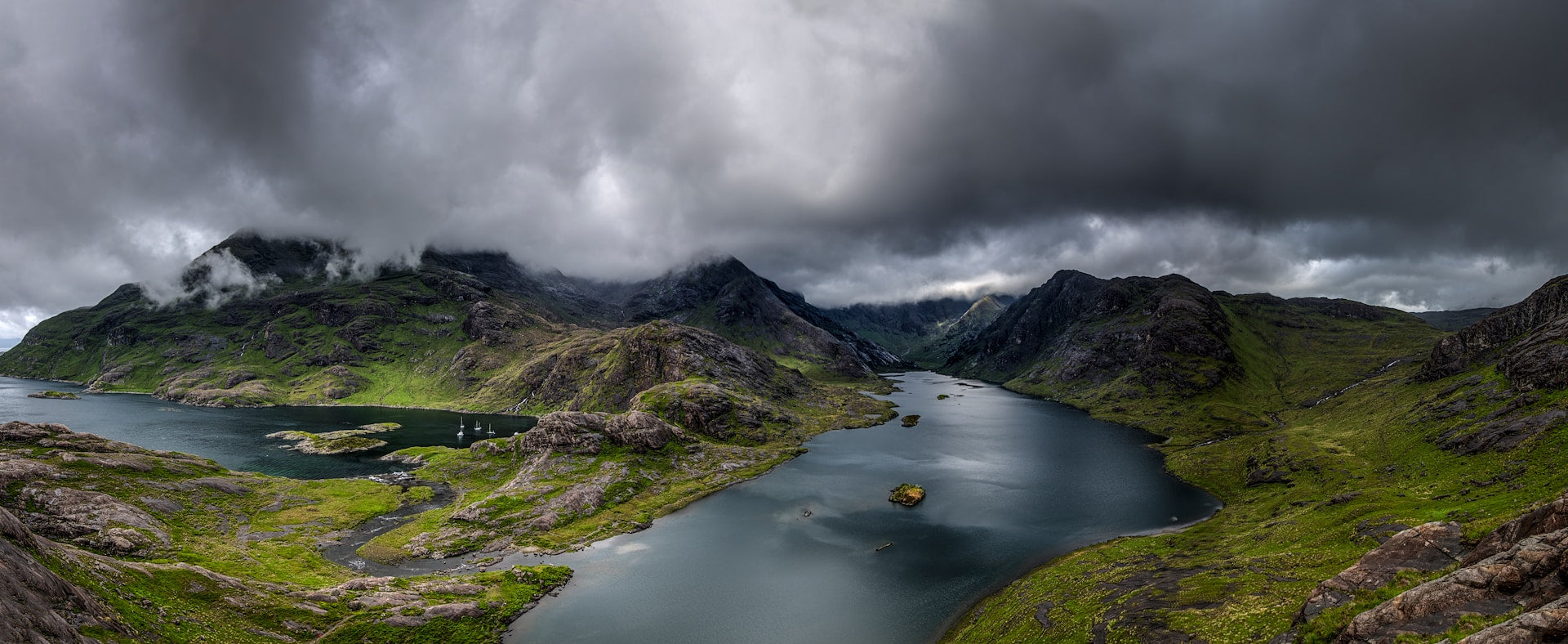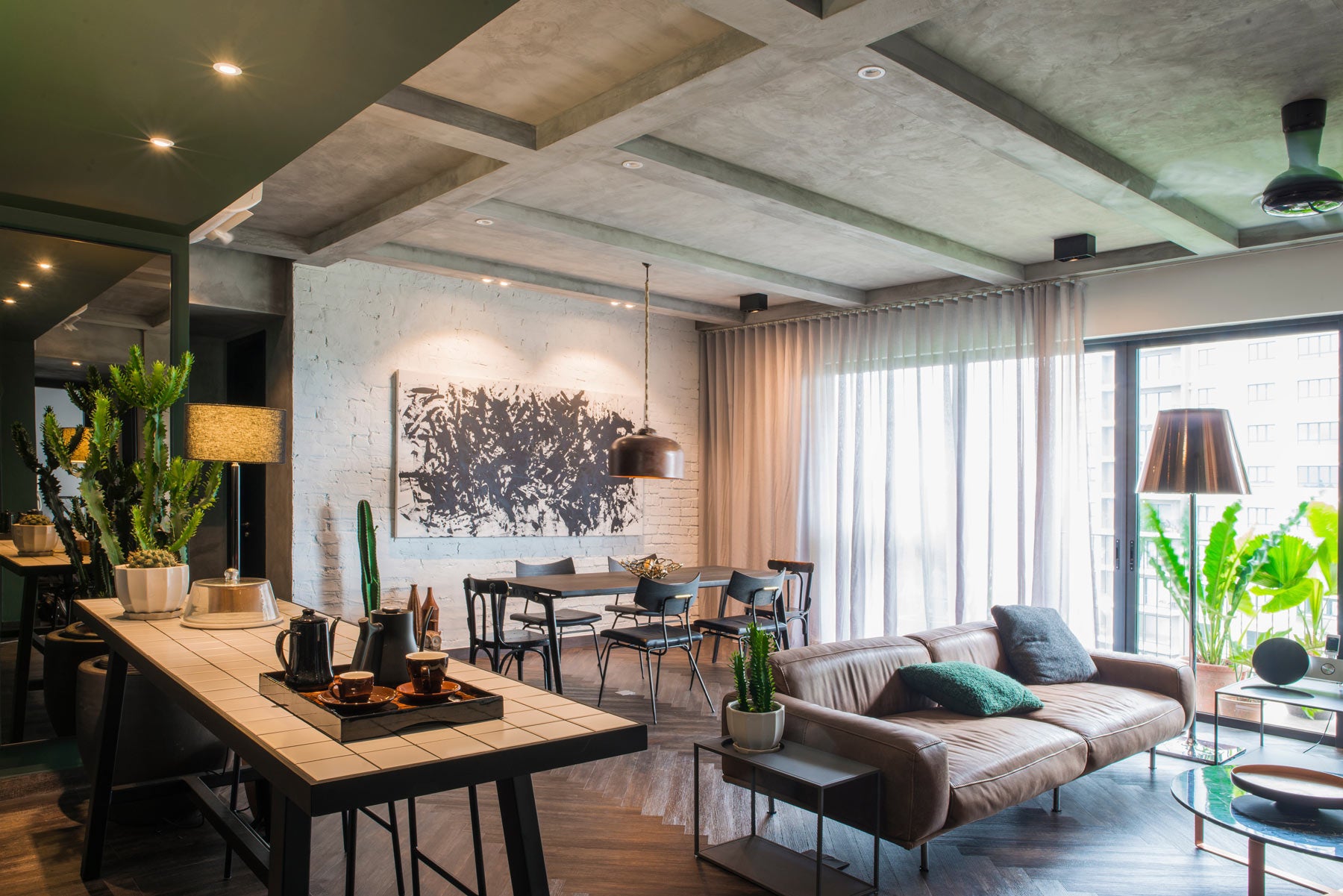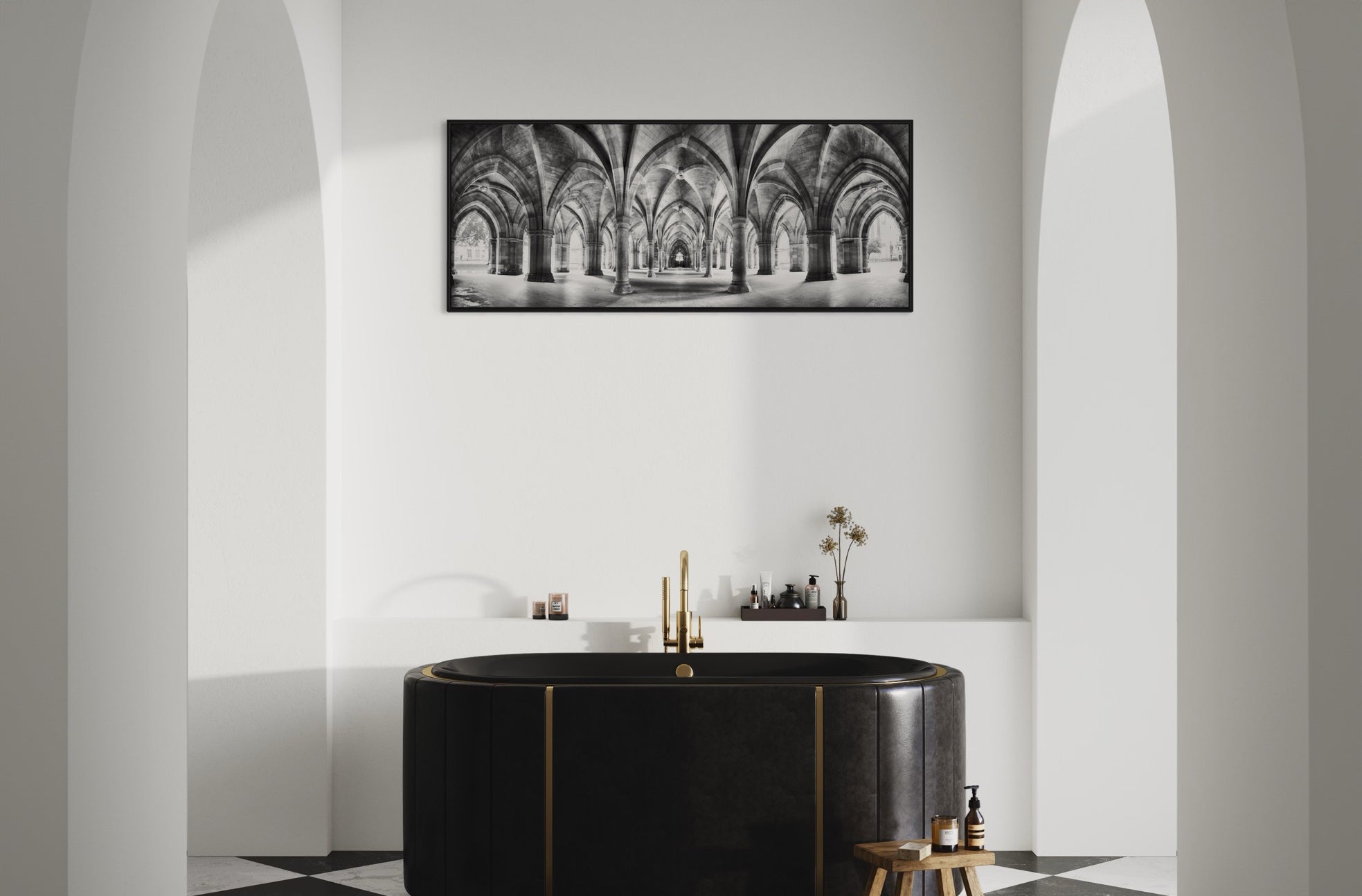The Essence of Panoramic Photography: More Than Meets the Eye
Panoramic photography transcends standard frames, encapsulating vast perspectives. This technique inherently challenges photographers to think differently about composition and narrative, urging them to weave a broader visual story. Herein lies the essence:
- Expansive Narrative: Through elongated fields of view, panoramas narrate a tale that extends beyond the confines of conventional photography.
- Visual Splendour: They command attention with wide, sweeping vistas that deliver a sense of scale and place.
- Emotional Resonance: The immersive nature of panoramic images often evokes a stronger emotional response, offering a more potent connection to the scene depicted.
- Technical Precision: Achievement in panoramic photography necessitates meticulous attention to detail and precision in the stitching of images, a testament to the photographer's skill.
As a result, panoramic photography embodies a unique symbiosis of art and technical prowess, revealing a world that's indeed much more than meets the eye.
Capturing the Horizon: How Panoramas Expand Our View
The testament of panoramic imagery lies in its unparalleled capacity to embrace the vastness of landscapes. By allowing an elongated field of view, panoramas enable viewers to experience a continuity in vision similar to that of the human eye, but with an extended periphery. This method of photography breaks the confines of the conventional frame, offering a more comprehensive sense of place and moment. Architects, geographers, and environmentalists harness such panoramic visuals to analyse spatial relationships and environmental contexts, thereby gaining insights that single-frame images cannot provide. Through stitching together multiple images, panoramas encapsulate the grandeur of horizons, conveying not just a sight, but an expanse that immerses.
From Daguerreotypes to Digital: The Evolution of Panoramic Imagery
The trajectory of panoramic photography is marked by groundbreaking advancements. Originally captured through daguerreotypes in the 19th century, panoramic images required multiple exposures stitched together, limiting their scope. With the advent of the Cirkut camera in the early 20th century, photographers could capture wide vistas in a single image. Film's predominance enabled improvements in image clarity and panoramic scope, paving the way for advanced lenses and mechanical systems.
The digital revolution has exponentially expanded the potential for panoramic imagery. Digital stitching software seamlessly combines multiple images, while panoramic cameras offer high-resolution captures. Professional tools like 360 image enhancement software refine the quality of panoramic captures, ensuring crisp details and balanced lighting. The modern era introduces interactive 360-degree views accessible through virtual reality headsets, allowing full immersion within a panoramic scene. This continuous evolution demonstrates the drive to expand human perception beyond natural visual limits.
The Art of Stitching: Techniques Behind Panoramic Picture Creation
Creating a panoramic picture involves meticulous stitching where multiple photographs are seamlessly merged. Professional photographers and hobbyists alike use various techniques:
- Overlapping Frames: To ensure precision in merging, each frame must overlap the previous one by about 30%.
- Software Assistance: Programs like Adobe Photoshop or PTGui assist in aligning and blending images by finding common points.
- Manual Adjustments: Skilled artists may manually adjust the seams to correct for any discrepancies in alignment or exposure.
- Tripod Use: A steady tripod with a panoramic head helps maintain the camera's level and the horizon consistent across shots.
- Consistent Settings: Maintaining uniform exposure, focus, and white balance settings across all images is crucial for a smooth panoramic image.
Mastering these techniques allows for the creation of wide-view images that capture landscapes with breathtaking detail and an immersive perspective.
Perspective on a Grand Scale: Understanding Panoramic Aspect Ratios
In the domain of photography and cinematography, panoramic aspect ratios stand as symbols of vastness and immersion. Defying the conventional 4:3 or 16:9 ratios, panoramics often embrace 2:1 or wider, with some stretching to 10:1, enveloping the viewer's field of vision. This broadened perspective mirrors the human eye's wide horizon span, engendering a more naturalistic viewing experience. The choice of aspect ratio intricately weaves the narrative, influencing visual storytelling by encompassing sweeping landscapes and intricate wide-scene compositions, which channel the viewer's gaze across the grand tapestry of the image, compelling them to pause and explore each detail.
Beyond the Frame: What Panoramas Reveal About Time and Space
Panoramic photography is a unique lens into the continuum of environment, capturing not just a single moment, but a broadened temporal slice. When one beholds a panorama, they are not merely perceiving multiple points in space, but also, potentially, various instances in time encapsulated within one cohesive image. This expansive visual narrative allows for a deeper examination of the relationship between time and space, offering insights into how they intertwine to craft our perceptual reality. As such, panoramas provide a powerful tool for historians, geographers, and artists alike, enabling a richer understanding of the dynamics of landscapes, urban settings, and natural vistas, across moments and meters.
Sweeping Vistas and the Human Perception: A Psychological View
Humans are wired to respond to sweeping vistas with awe. Psychologically, panoramic pictures can tap into our primal need for exploration and understanding of our environment. They foster a sense of freedom, triggering emotional responses ranging from exhilaration to serenity. The broad scope of a vista encourages a release from our narrow focus on the immediate surroundings, offering a moment of pause and reflection. This is because expansive scenes are believed to stimulate the brain's reward pathways, invoking a pleasurable and often humbling experience. The grandeur of vast landscapes can shift perspectives, quite literally expanding one's view to comprehend the larger context of their existence within the seemingly boundless natural world.
Challenges and Triumphs: The Technical Aspects of Shooting Panoramas
Shooting panoramic pictures is a meticulous process that confronts photographers with several challenges. A primary technical obstacle includes maintaining a uniform exposure and white balance across a sweeping scene. Variations in natural lighting conditions can cause inconsistencies in the final stitched image. Photographers must also navigate the complexity of parallax errors, which can disrupt the seamless blending of multiple shots, especially when objects are at varying distances from the lens.
Solving these problems usually involves using a tripod with a specialized panoramic head, allowing for precise control of camera movement. Successfully overcoming these technical hurdles can lead to triumphant panoramic images that capture expansive details and convey a broader scope of the environment, offering viewers a more immersive experience. The triumph of panoramic photography lies in its ability to present a wide perspective while maintaining a high level of detail and coherence within the image, bringing a narrative to life in a single, sweeping view.
Reading Between the Pixels: The Story a Panorama Tells
Behind every panoramic image lies a tale stretching beyond its sweeping view. These wide-angle photographs encapsulate more than mere scenery; they convey the grandeur of landscapes, the bustle of city life, or the atmosphere of a historic event. To decipher the narrative woven into a panorama's expanse, one must consider the photographer's intent, the context of the captured moment, and the elements included in the frame. As the viewer's eye moves across the vastness, each segment of the panorama can reveal intricate details about time, place, and emotion, transforming a simple picture into a rich storytelling tapestry that can be made into a beautiful framed photo print and hung on your walls to enjoy forever.
What is the Difference Between a Normal Photo and a Panorama?: Comparing Aesthetic and Emotional Impacts
Choosing between panorama and standard photos can significantly affect the viewer's experience. Panoramic images offer an expansive view, encapsulating wide landscapes or cityscapes, which often instils a sense of awe or vastness. The elongated field of view in panoramas may emotionally engage viewers more, as they feel immersed in the scene.
Standard photos, by comparison, usually focus on a singular subject or a narrower scene. They have the potential to convey a more intimate and detailed story, often evoking stronger emotional responses to the specific content within the frame.
In the realm of aesthetics, panoramas often present challenges in composition due to their wide aspect ratio but can result in visually dynamic representations of space when executed skillfully. Conversely, standard photos adhere to traditional compositions and can be more accessible to the general audience, rendering them universally relatable.
The choice between the two types hinges on the desired impact: whether to invite contemplation of a broad vista or to encapsulate the essence of a moment within a confined frame.
Iconic Panoramas: Examining Famous Examples and Their Historical Context
The panoramic view from Mount Everest reveals human endurance's peak, symbolising exploration's zenith. Inversely, the Hiroshima Peace Memorial Park panorama stands as a poignant reminder of nuclear warfare's devastation. The sweeping vistas of the Grand Canyon are testimonies to nature's geological artistry, tracing millennia in its layers. The Paris skyline from the Eiffel Tower captures the essence of modernity, with its historical architecture juxtaposed against the city's contemporary pulse. Each panoramic photograph encompasses a narrative, capturing moments of collective consciousness within a single frame, offering a historical and cultural tapestry as vast as the views they present.
Virtual Reality and Panoramas: Redefining Immersive Experiences
Virtual reality (VR) has escalated the potential of panoramic pictures, transcending traditional viewing experiences. By integrating 360-degree panoramas with VR technology, viewers can immerse themselves in scenarios that closely mimic real-life presence. These immersive environments are crafted meticulously, encapsulating every detail and providing an all-encompassing sensory journey. The interactive nature of VR panoramas allows one to explore scenes with a freedom akin to physical movement, fostering a deep connection between the viewer and the visual content. This synergy of panoramic photography and virtual reality signals a paradigm shift in how we perceive and engage with panoramic imagery.
Unlocking the Potential: Tips and Tricks for Crafting Perfect Panoramic Shots
Photographers aiming for compelling panoramic shots can enhance their outcomes by adopting specific techniques.
- Use a tripod for stability, ensuring a level horizon throughout the series of images.
- Select a panoramic head attachment to maintain the nodal point, preventing parallax errors.
- Employ manual mode to keep consistent exposure and white balance across all frames.
- Overlap images by about 30% to ensure seamless stitching in post-processing software.
- Scout the location beforehand to envision the panoramic sequence, considering foreground interest and natural leading lines.
- Minimize movement within the scene to avoid ghosting during the stitching process.
- Capture in the RAW format for greater flexibility in post-production adjustments.
- Practise panning smoothly and at a consistent pace to maintain image alignment.
Implementing these methods, photographers can master the artistry of panoramic photography, producing faultless and immersive images.
Panoramas in Pop Culture: Influence on Art, Film, and Advertising
The panoramic format has deeply permeated various facets of visual culture.
- In art, sweeping panoramas revolutionised landscape painting, granting artists the capability to depict expansive vistas with unprecedented scope and detail.
- The film industry frequently utilises panoramic shots to establish dramatic settings or underscore the grandiosity of action sequences. Widescreen formats like Cinemascope and IMAX owe their origins and popularity to the panoramic perspective, enhancing cinematic storytelling.
- Within advertising, panoramic images are strategically employed to conjure immersive scenarios, engaging consumers with a sense of inclusion in the advertised experience. These wide-angle portrayals often aim to elevate products to a larger-than-life status.






